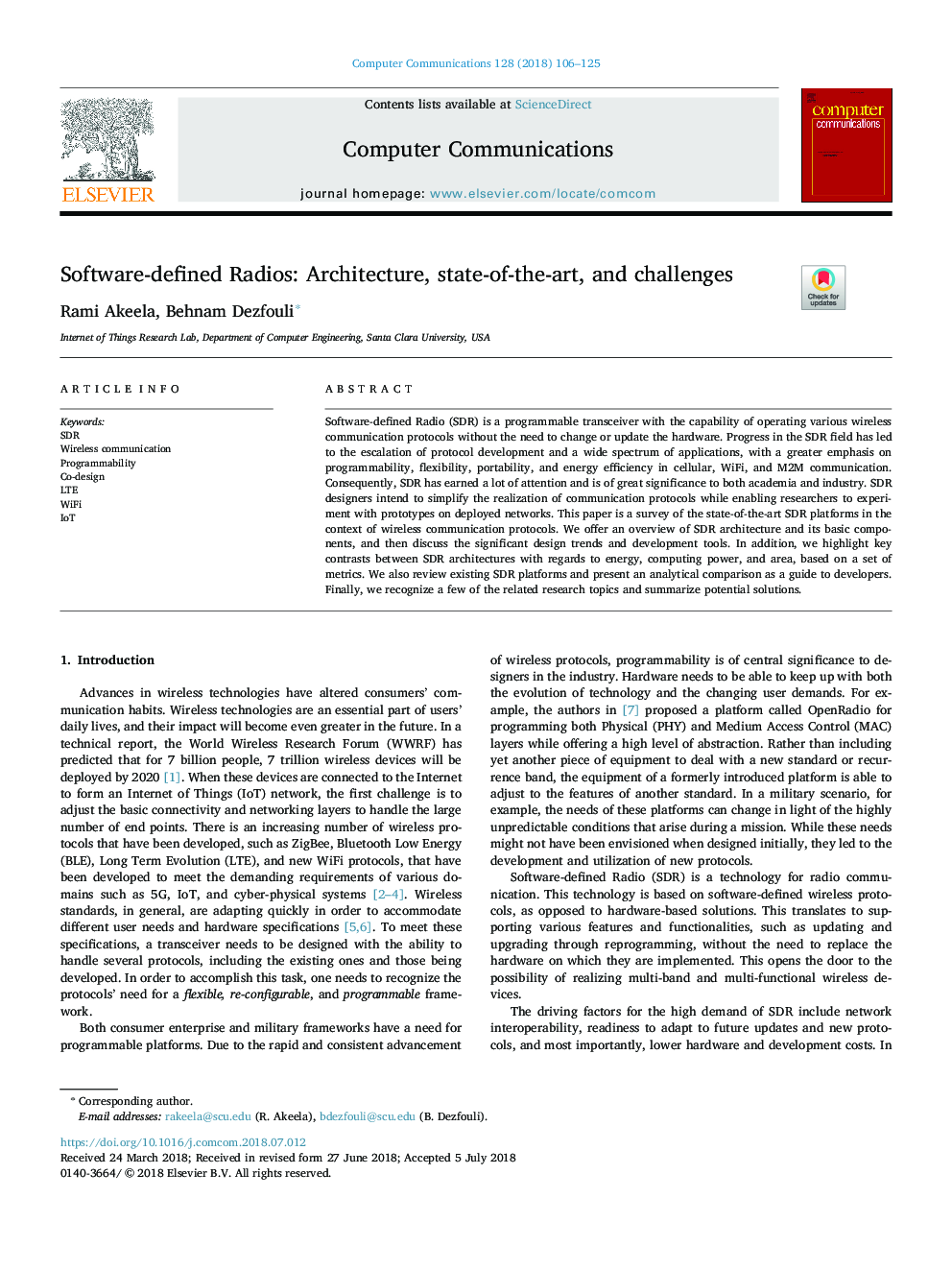| Article ID | Journal | Published Year | Pages | File Type |
|---|---|---|---|---|
| 6879900 | Computer Communications | 2018 | 20 Pages |
Abstract
Software-defined Radio (SDR) is a programmable transceiver with the capability of operating various wireless communication protocols without the need to change or update the hardware. Progress in the SDR field has led to the escalation of protocol development and a wide spectrum of applications, with a greater emphasis on programmability, flexibility, portability, and energy efficiency in cellular, WiFi, and M2M communication. Consequently, SDR has earned a lot of attention and is of great significance to both academia and industry. SDR designers intend to simplify the realization of communication protocols while enabling researchers to experiment with prototypes on deployed networks. This paper is a survey of the state-of-the-art SDR platforms in the context of wireless communication protocols. We offer an overview of SDR architecture and its basic components, and then discuss the significant design trends and development tools. In addition, we highlight key contrasts between SDR architectures with regards to energy, computing power, and area, based on a set of metrics. We also review existing SDR platforms and present an analytical comparison as a guide to developers. Finally, we recognize a few of the related research topics and summarize potential solutions.
Related Topics
Physical Sciences and Engineering
Computer Science
Computer Networks and Communications
Authors
Rami Akeela, Behnam Dezfouli,
